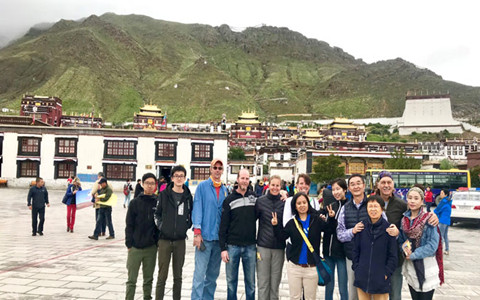Tibet, located on the world's
roof, is unlike any other hiking paradise! Tibet, with its majestic Himalayan
peaks, tranquil valleys, and hallowed pilgrimage paths, provides infinite
options for a once-in-a-lifetime hiking journey.
Meanwhile, due to Tibet's high
altitude and rough terrain on the rising plateau, trekking is physically
demanding and necessitates careful planning. So, in this travel guide, we'll
present Tibet trekking recommendations to assist you in thoroughly
preparing for a successful Tibet trekking journey.
Trekking in Tibet is physically
challenging and requires proper preparation.
While Tibet's breathtaking
Himalayan environment provides an unequalled Tibet Trekking China
paradise for visitors, you must be well prepared to acclimatise to the high
altitude in Tibet.
It is recommended that you
refrain from rigorous activities or intense workouts for approximately a week
before travelling to Tibet since your body requires recuperation to adjust to
the high altitude. Furthermore, avoid getting a cold before travelling to
Tibet, as this will make it much more difficult for your body to adapt to the
high altitude there.
Furthermore, for your first 24
hours in Lhasa, getting enough rest at your accommodation and being hydrated
can assist you in acclimatizing to Tibet's thin air. Most visitors to Tibet
will adjust to the high altitude in Lhasa within two or three days. Then you'll
be ready to embark on stunning Tibetan hikes.
For the Best Experience, Plan
Your Trek in Tibet. Between April and October, Tibet experiences an intense
highland environment with significant temperature differences between day and
night. All Tibet hikes are best completed between April and October. Daytime
temperatures are generally pleasant, with clean air and clear mountain routes.
April to early June and September to October are the best months for trekking in Tibet to visit Mt. Everest and worship at the holy Mt. Kailash.
Furthermore, the dry Tibetan Plateau receives much-needed rain from July to August, which coincides with vivid Tibetan celebrations such as Saga Dawa and Shoton Festival. You can have a more enriching Tibet Trekking Adventure experience, particularly when travelling to the sacred Mt. Kailash during the jubilant Saga Dawa festival. In most circumstances, nighttime rain has little impact on trekking in central and western Tibet. Our local specialists will attentively monitor the weather forecast and develop flexible plans for the day's walk.
Clients Travel Stories: Armin and Victoria Tibet Travel Experiences







































